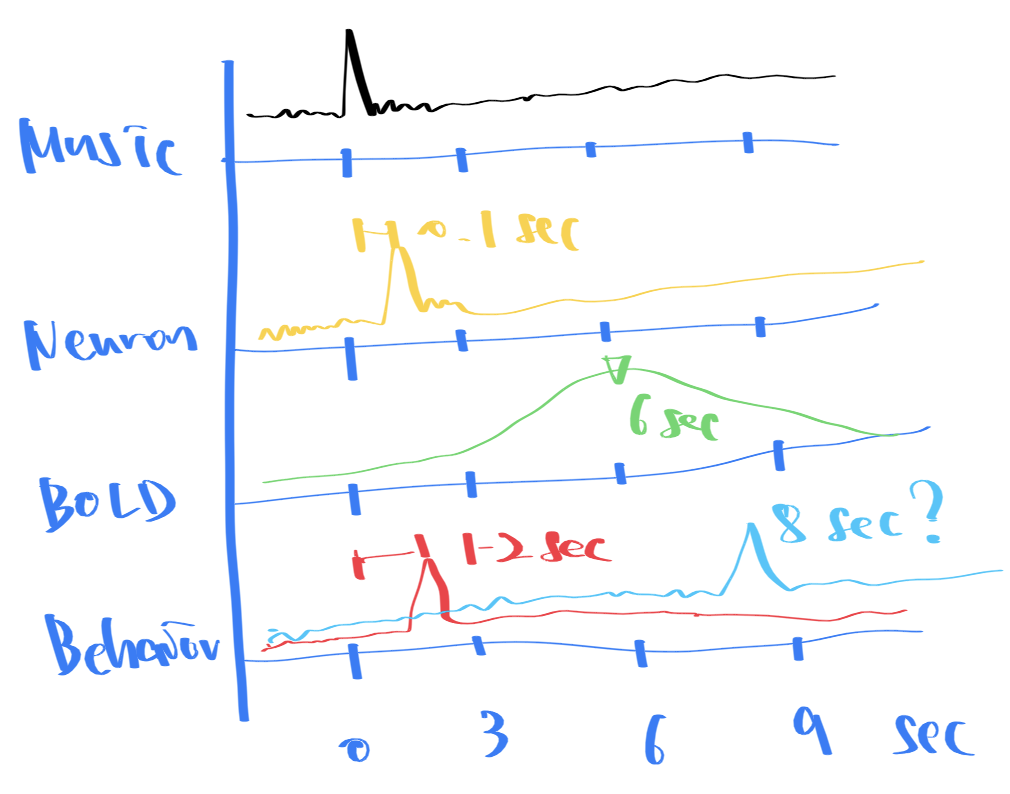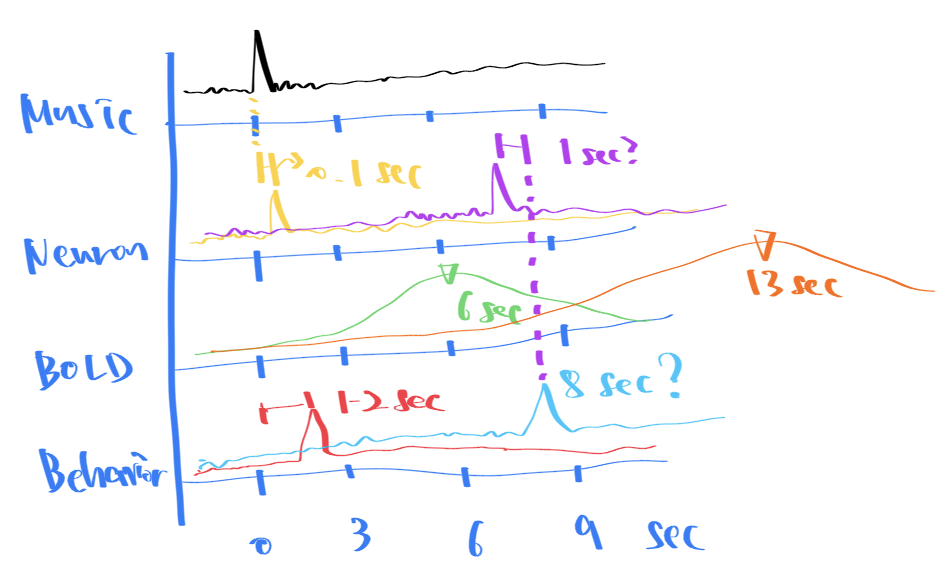Temporal orders
Because of the sluggish (4-6 secs to peak) ![]() nature of BOLD (blood-oxygen-level-dependent) fMRI signal, the temporal orders of music, neural processing, and behavioral outcomes can be difficult to model.
nature of BOLD (blood-oxygen-level-dependent) fMRI signal, the temporal orders of music, neural processing, and behavioral outcomes can be difficult to model. ![]()
Consider a hypothetical case:
 |
| Figure 1. A hypothetical case of temporal orders. MUSIC represents an impulse-like feature that evokes emotional response. NEURON shows a follow-up neuronal activity from 0.1 sec. BOLD signal is delayed by ~6 sec from the neural activity. BEHAVIOR-RED indicates a rapid response within 1-2 sec. BEHAVIOR-CYAN indicates a slow response even 8 seconds after the event. |
We often assume an linear Granger causality from MUSIC → NEURON → BEHAVIOR. This may be too simplistic to model all kinds of responses, but it should do some of them.
However, because the BOLD signal is a smoothed and delayed neural activity due to the slow heamodynamics (neural/glial activity uses up oxygen in the blood → (perhaps) astrocytes control the blood vessel tension → an influx of oxygenated blood), this linear Granger causaility can be broken: MUSIC → BEHAVIOR → BOLD. ![]()
Moreover, if a certain musical event is mediated by a neurochemical modulation, the affective response may take even longer than BOLD (i.e., BEHAVIOR-CYAN; or is this unrealistic?)
In this case, using negative lags can be a solution? ![]()
August 25, 2024
But how do we know if the BEHAVIOR-CYAN is actually from this MUSIC event if this is via something that we don’t have data to model?
Let us say in via some mysterious neurochemical mechanism, there exist a different neuron that is involved in this slow response:
 |
| Figure 2. A hypothetical case of temporal orders with some more stuff. Perhaps for BEHAVIOR-CYAN, NEURON-PURPLE activity should be there and BOLD-ORANGE response can be seen. |
Even without the BOLD delay, now we are discussing some magical process like this![]() :
:
MUSIC → NEURON1 → BEHAVIOR1 → (SOME MAGIC) → NEURON2 → BEHAVIOR2
But then, this cannot be shown in BOLD-GREEN but only in BOLD-ORANGE. ![]()
Enjoy Reading This Article?
Here are some more articles you might like to read next: